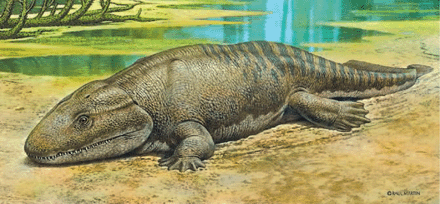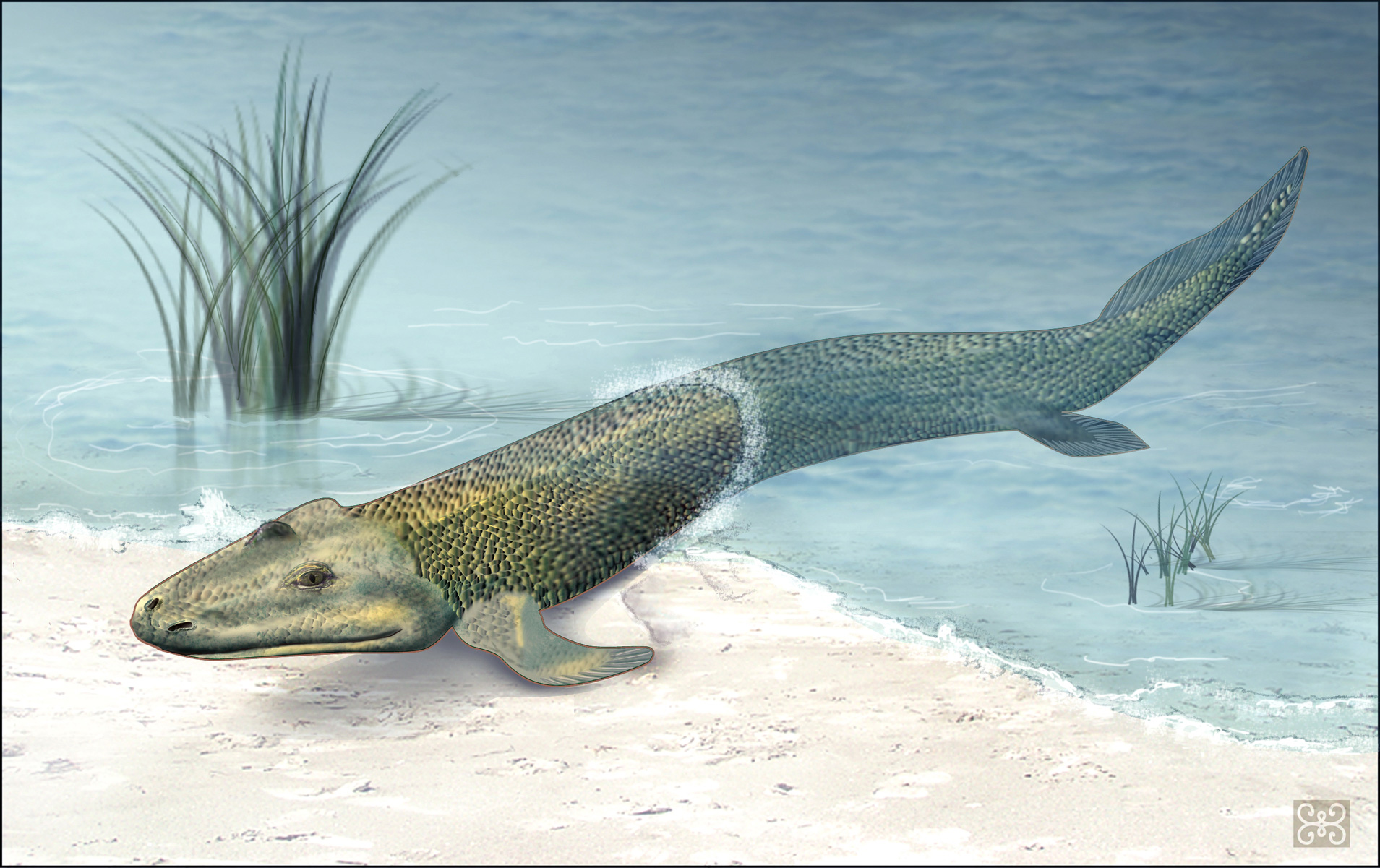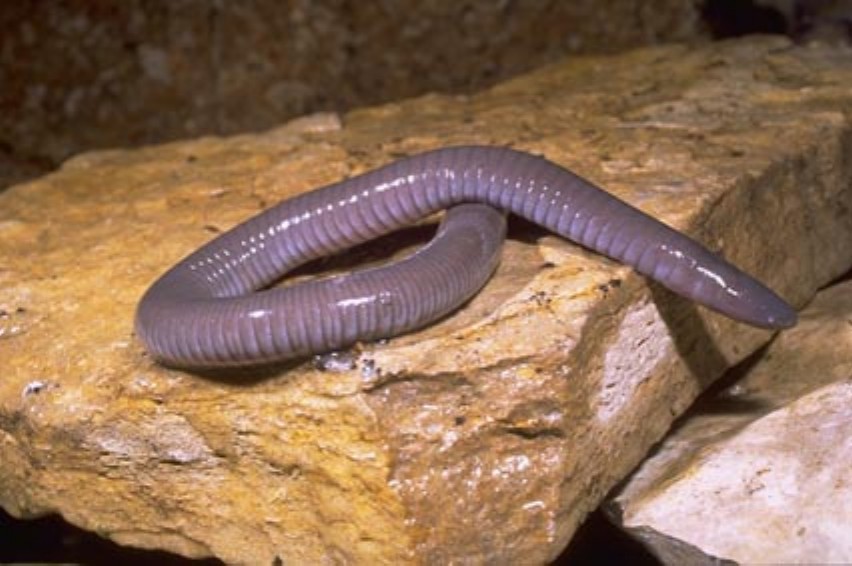One of the biggest times in evolutionary history was when animals made the jump from water to land. This took over millions of years and it was physically dangerous for many species to try to make this jump. It required literally a reset on every organ known.
Some species manage to do well transitioning and this included the early tetrapods and amphibians.
Evolution of limbs
 There are early theories which suggested that limbs evolved in order to
There are early theories which suggested that limbs evolved in order to
help enable escape from the evaporating pools and move to other water bodies.
Recent fossils however indicates that early tetrapods were fully aquatic but they had limbs that were not strong enough to support a long time on land.
So why did they leave? To escape the overcrowding in the oceans and to exploit territorial resources which include plants with oxygen and arthropods which have already made it to land!
The challenges and benefits?
- Oxygen content
There is a lot more oxygen on land due to air so therefore it diffuses more rapidly in air. Only when the animal developed lungs could they breathe easier on land as it is buoyant, unlike gills which will collapse. - Air is less dense than water
It is 50 x less viscous than water, so the animals had to develop strong limbs in order to move around on land. An increase in the skeletal structure is needed to help movement. - Temperature fluctuations greater on land
Water generally has a good thermal inertia as it takes longer to heat and cool than air. The animals therefore need to develop the ability to regulate their temperature as air fluctuates a lot.
Ectotherms such as amphibians and reptiles have learnt to move in order to keep warm or cool.
Endotherms such as mammals and humans have to burn energy to keep warm and sweat.
Evolutionary transition to land
This is believed to have occurred 408-360 million years ago during the Devonian period when the weather started becoming variable. Freshwater habitats started becoming low in oxygen as they start drying up. So there needed to be changes and this evolutionary advances included lungs and limbs!!
- Lungs
Since gills are useless in air lungs were evolved and they developed as outgrowths of the pharynx.
They increased the vascular system which included a network of capillaries to allow greater efficiency.
There is also a shift to double circulation which has pulmonary and systemic circuits. The blood pressure would also not be lost with the system in comparison to the fish with their singular circulation.

- Limbs
There are different tetrapods which have evidence of limb evolution.
These tetrapods included:
- Eusthenopteron

This fish have basic limb structure homologous to our arm and wrist bones, and they have a pectoral girdle for supporting the forelimbs which is fused to their skull. - Acanthostega

They had tetrapod limbs which contained a humerus, radius, ulna, carpals and phalanges.
There was also a pectoral girdle now free from the skull to allow independent movement. It does appear to be fully aquatic as the limbs were too weak for land. There was also gills and lungs. - Ichthyostega

There are terrrestrial adaptations which includes:
-jointed limbs
-stronger vertebrate
-pectoral and pelvic girdle and muscles to lift body off the ground
-ribs which are vertical
-ears, lungs
-olfactory organs which are suited for life on the land
-hind limbs which have bones like humans
There was still a tail retained however! - Tiktaalik

This was the intermediate form between fishes and amphibians, with basic wrist bones and simple fingers showing that they can be on land (weight bearing).
SUPERCLASS TETRAPODA
CLASS AMPHIBIA
Amphibians have the best of both worlds! They depend on water with their moist skin and still having an aquatic stage, but they are now also able to go onto land!
ORDER GYMNOPHIONA (Caecilians)

This orders name when broken down means “naked snake” and since they are apodic they have lost their limbs. There is 190 species with the ability to be either aquatic or burrow (majority).
They have poor vision due to a layer of skin growing over the eyes to protect, but they have a pair of protrusible tentacles on either side of the snout to have chemo and mechano receptors.
They exclusively use internal fertilization and is the only order to do so.
ORDER CAUDATA (Urodela)

This order have apparent tails and there are 620 species present. They can be either aquatic or terrestrial with 4 limbs and are carnivorous in diet.
They are also commonly known as salamenders. The aquatic species also includes the axolotls which are used as pets at times.

The male does a courtship dance which then makes the female follow the males.
They reproduce internally where the male deposits a spermatophore and the female walks along and picks it up just casually.
The eggs develops externally: the aquatic eggs hatch into larval forms with external gills and fin like tail, and the terrestrial species eggs hatch as miniature adults.
Some species in this order actual guard the eggs exhibiting maternal care.
How they breathe?
They respire through cutaneous respiration, gills or lungs.
Paedomorphosis
This is when the larval characteristics is retained in the adults with an example being the gills or the tail. Some species are non-metamorphic such as the axolotl, while some a facultatively metamorphic like the tiger salamander.
ORDER ANURA (Frogs and toads)

There are over 6000 species of order anura with the adults lacking a tail. They have a range of habitats from near to water or in dry desert.
Food time?
They have different methods as larvae and adults.
As a larvae they are herbivorous and contain a long digestive tract, while as an adult they are carnivorous and contain a shorter digestive tract. The adults also have a sticky tip on their anteriorly attached tongues which helps for easy capture of prey.
Skin?

The skin is very thin and moist with 3 layers including the epidermis, dermis and muscles. They have a keratin covering which is just enough to protect them.
They have a mucous glad used for moisture and a poison gland which varies in amount between species.

The most poisonous frog is the South american poison dart frog!
Musculoskeletal system
This is specialized for the land with the well-developed endoskeleton combining bone and cartilage.
The vertebrate column is stiff and this is an adaptation for saltation.

There is now a urostyle which is a fused caudal vertebrae. It is used to transfer the pressure and reduce the jumping force.
The long pelvic bone (ilium) is also a new feature.
There is a reduced thoracic vertebrae for stability, but also a process called Zygaphophyses where the process are used to brace the vertebrae and restrict lateral bending.
There is a skull which is lighter with less bones and ossification to help reduce the weight, and also the skull has adapted for the sense organs such as eyes etc.
There are 3 joints per limb, with 4 digits on the front and 5 digits on the back. There is 1 bone known on the first joint and on the third there is 2 bones.
The muscles are powerful in anura with the anterior and ventral muscle being forward and along midline, while the dorsal and posterior muscles are backwards and away.
Breathing!
In the tadpoles they breathe through their gills as they are underwater, but as an adult they breathe through the skin, lungs and the mouth. The lungs have a low surface area.
They breath via positive pressure, so the air enters the mouth and the air drops into the lungs. It then exits from the lungs through the mouth via body wall contractions and elasticity. They don’t have a strong muscle which naturally sucks in the air.

Vocalisation is a new feature used where they have vocal cords located in the larynx. The sounds are made from a combination of air, mouth and lungs.
Circulation
They have a 3 chambered heart with an incomplete partitioning. The lungs need double circuit flow which can be achieved from the pulmonary and systemic circuit. This requires separation from the heart flow, but amphibians are not complete with that.
The right atrium takes in deoxygenated blood from the body while the left atrium takes in the oxygenated blood. Therefore there is some co mingling occurring.
Sense organs
The nervous system has become more developed as it adapted to terrestrial life.

The optic lobe called a tectum allows visual information. There is a cornea which refracts the light, while the lens is there to move back and forth to focus. The retina has rods which sees in black and white and low light still allows visuals, and cones which sees in colours and works well in high light level.
There is a nictitating membrane which is moist and dust free around the eye.
Life cycle

There is external fertilization and development which occurs, and the larvae metamorphose into an adult. Their tails become absorbed and the intestine shorts and mouth changes to help with the adult lifestyle. There is also development of lungs and the gills get absorbed. This life cycle can only occur when near water.
There is amplexus which occurs where the male and female get connected together as sperm is transferred. The eggs are then released and they develop in a jelly coat.
You can read this life cycle to help understand more!
So that is the end of amphibians wow that was long. Next time I will start talking about more interesting things known as the Reptiles!!
